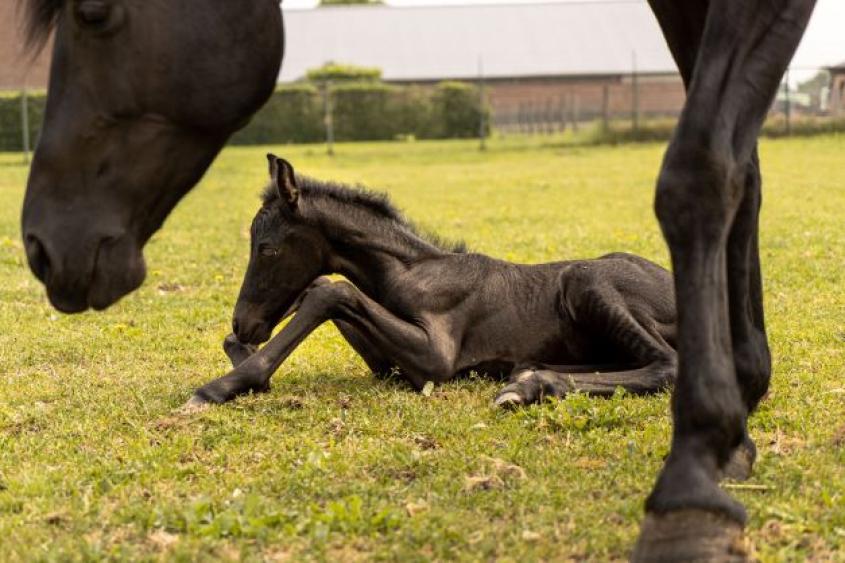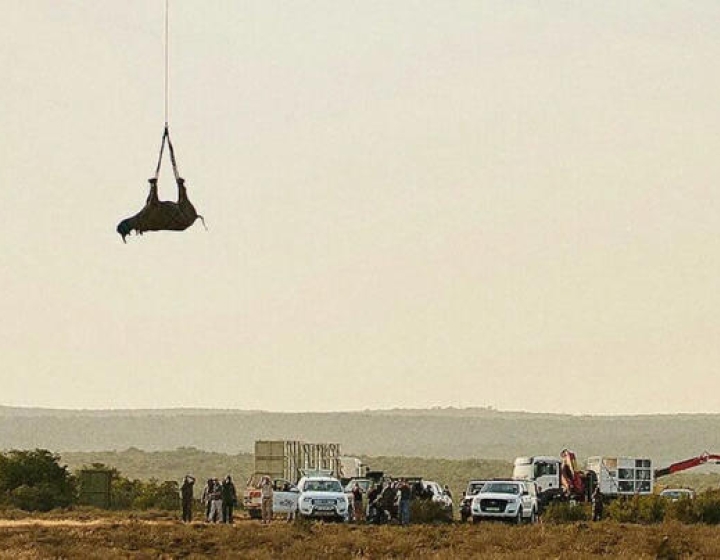Foal speed ahead: Caring for the newborn horse
This is an accompanying article to a Cornell Equine Seminar presented Dec. 14, 2021 by Dr. Barbara Delvescovo, clinical instructor in large animal medicine.
The checklist for evaluating and caring for a newborn foal is extensive, with many things to look out for, both during birth and after. Understanding what is normal and abnormal is crucial as humans help our animals begin what will hopefully be a healthy and happy horsey life.
What follows here is an overview. Please watch Delvescovo’s entire presentation for more extensive information.
Pregnancy
Horse gestation typically lasts around 342 days, with colt pregnancies lasting slightly longer than a filly’s. A foal delivered before day 320 is considered premature and may suffer health problems, and foals that go beyond 360 days of gestation may also have problems from being in the womb too long.
Signs that a mare is about to give birth include her udder filling with milk about two to four weeks before foaling, and secretions of small amounts of colostrum one to four days before labor.
Preparing for the big moment
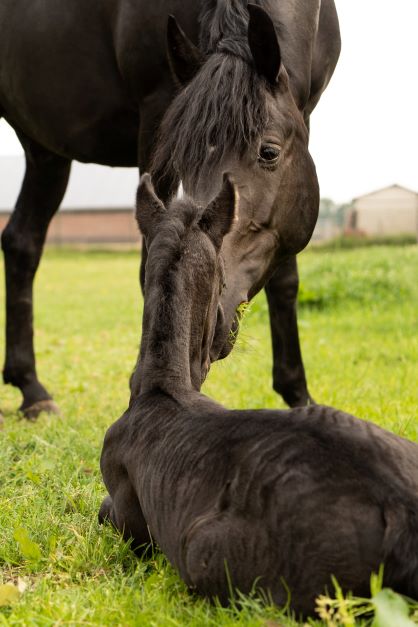
Mares typically foal at night. “Being prey, horses are trying to find the time of day where they feel the safest and away from the public,” says Delvescovo. This makes veterinary monitoring during pregnancy very important. “Talk to your vet even before you decide to breed your mare, but especially during pregnancy, because the vet exam can highlight and detect high-risk pregnancies.”
For owners who are new to foaling, who cannot monitor around the clock, or whose horse has a high-risk pregnancy, Delvescovo strongly recommends against foaling at home.
If owners do decide to foal at home, they should make a detailed plan with their veterinarian for the event. Those foaling at home should also make sure to have a clean, safe and quiet space for the birth. While some mares can successfully foal out in an open pasture, Delvescovo notes it’s typically best to have the mare confined so owners can easily observe the foaling.
This space should be stall measuring a minimum of 14X14 feet with good bedding. Straw is preferable to wood shavings, as shavings can stick to the horses and can be aspirated by the foal.
Delivery
During the birth, owners should keep a time record. “Sometimes, especially if it’s your first foaling, it’s difficult — your emotions come into play and it’s difficult to know how long it took. So, write everything down,” says Delvescovo.
Delivery occurs in three stages:
- Stage one involves initial uterine contractions, which can last between 30 minutes and six hours, and manifest as colic-like symptoms in the mare. “They might pace around the stall, they might pull and sweat—those are all signs of normal uterine contractions.”
- Stage two comprises the rupture of the water bag, signaling that the baby will arrive in 20 to 30 minutes. This timeframe is crucial, as the equine placenta detaches very readily — once that happens, the foal will be without oxygen, and thus cannot survive an extended labor. “If you detect a problem at this stage, you need to intervene very promptly,” says Delvescovo.
- Stage three is the passage of the placenta, which must happen within three hours — otherwise it is diagnosed as a retained placenta, which can cause a lot of problems.
Problems during labor
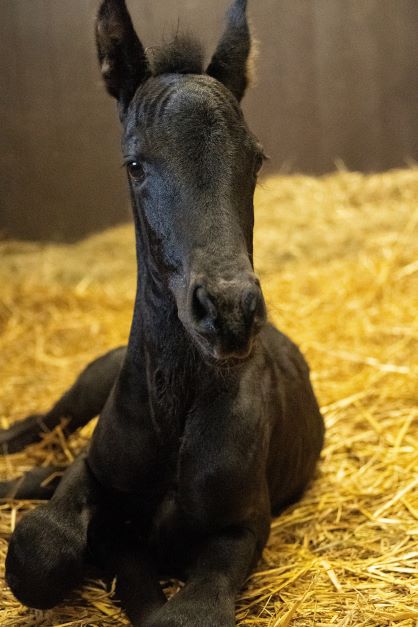
During foaling, Delvescovo says a failure to progress from stage one to stage two is a problem, as is a prolonged stage two (over 20 minutes after the water breaks.) If the foal is not emerging or no major contractions are occurring — then it’s time to intervene.
Owners should also look out for malposition. Ideally, a foal’s front legs emerge first, followed by the head. Similarly, owners should look out for the ‘red bag’ — the membranes surrounding the foal are usually white and transparent, but if they appear red, it signifies a premature rupture of the water bag, and a loss of connection to the mare’s blood and oxygen supply. If an owner sees this, they must open the bag and pull the foal out immediately to halt asphyxiation.
Post-birth
If the birth sac is still covering the foal’s head, it should be removed within less than a minute of birth. Foals should breathe at around 60-80 breaths-per-minute and have a strong heartbeat. If not, they require immediate resuscitation. This involves clearing the airway of any mucus or substance sticking to their nostrils. As obligate intranasal breathers, horses rely on their noses for air.
For foals that are not breathing properly, owners should focus on ventilating, as respiratory arrest precedes cardiac arrest in most large animals. If the veterinarian is there, they will have an endotracheal tube that will enable ventilation. “If you don’t have that or your vet is not there, there are other simple ways you can ventilate the foal,” she explains. Laying the foal down and extending its neck, owners should breathe into one nostril while closing the other and closing the esophagus at the same time by putting the thumb on the left side of the foal’s neck behind the throat latch. This prevents air from entering the foal’s stomach. Owners should deliver 10-20 breaths per minute, either using their mouths or with a pump and mask delivery system that can be easily bought in advance.
After ventilation is going well, owners can re-check the heart rate. If it is not above 60 beats per minute, chest compressions may be added after about 30 minutes of ventilation. Placing the foal on a flat surface, the person giving compressions should kneel parallel to the foal’s spine, placing their hands on top of each other right behind the foal’s shoulder. The goal is to deliver 100 beats per minute — following the rhythm of the Bee Gees’ “Staying Alive.”
“Be careful not to synchronize with the person who’s giving ventilation, because they are two very different rhythms,” says Delvescovo. She recommends using the Foal CPR app by Veterinary Advances Ltd to help with this process.

Assessing your new foal
A newborn foal is a very delicate creature, with very unique needs. “Horses are prey,” Delvescovo says. “In nature, they need to make a very big transition between being in utero and being able to run away from predators.”
If any stress or pathologies disrupt this transition, problems can occur — sometimes causing body systems to reverse back to their fetal state. “It’s very important to know what a newborn does normally, and to be proactive when you see something abnormal,” says Delvescovo.
For a neonatal assessment, owners should identify key risk factors connected the mare, the foal itself and the pregnancy, summarized below:
- Mare: First-time mother, poor maternal behavior, illness, history of complications in pregnancy, foaling or abnormal foals
- Foal: Failure of transfer of passive immunity, congenital or acquired abnormalities, abnormal behavior
- Pregnancy: Placentitis, twins, abnormal length
To check for normal foal behavior, Delvescovo applies the “one, two, three” rule: Foals should be standing within one hour. Within two hours, the foal should be nursing and the mare passing the placenta. Foals should be passing meconium (their first feces) within around three hours. Colts should urinate within the first six hours, while fillies should urinate in the next 10-12.
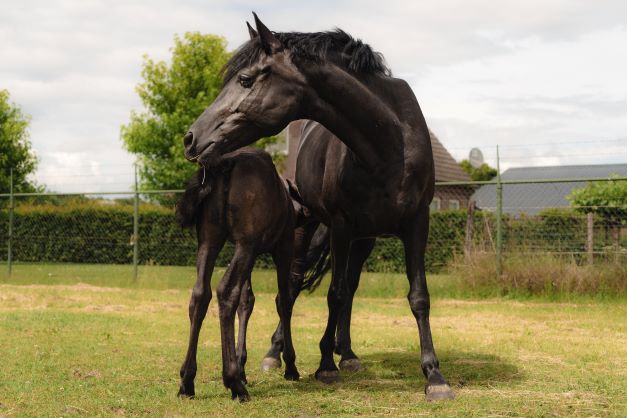
Nursing
Nursing is a vital step in the foal’s health and survival, so owners should observe closely to make sure it’s happening correctly: They should observe the foal’s tongue sealing around the nipple, see the foal actively suckling and swallowing. Some foals will not successfully latch or have trouble swallowing (known as dysphagia) which can show up as milk coming up through the nostrils. When the foal is done nursing, owners should check the mare’s udder to see if it has been emptied.
Owners must also look for the first meconium. If the foal does not defecate within the first several hours, there may be an impaction. Signs include restlessness, tail switching and straining to defecate.
Umbilical cord care is another key component of post-foaling management. If the cord does not break on its own after some time, people can gently twist and break it off manually — but should never cut it, to avoid bleeding. Owners may treat the umbilical stump with antiseptic solutions and monitor it closely or the first few days to watch for infection, hernias or other issues.
Foals that are lethargic and unwilling to stand or nurse, or don’t become curious and explore their surroundings, should be evaluated. Some foals may have interest in getting up but have mechanical issues with their limbs. “This is a case of contracted tendons, and the vet needs to immediately assess this because a foal that cannot get up is a foal that cannot nurse, and that can lead to very big problems,” says Delvescovo.

Transfer of immunity
For the foal’s first 6-12 weeks, they rely on their mother’s antibodies to protect them from pathogens while their own bodies build up an innate immune system. This transfer comes from the mare’s colostrum, the first milk that is produced after birth. Owners should check the quality of the colostrum using a Brix refractometer, which will show the percentage of immunoglobin antibodies in the colostrum. Above 30 percent is excellent, below 20 is not enough. As mentioned above, owners should also make sure the foal is able to access and nurse to receive the colostrum shortly after birth.
To make sure immunity transfer has taken place, the veterinarian will take a blood sample during the first 24 hours of life to assess the foal’s immunoglobin antibodies (IgG).
Foals can only absorb IgG during their first 18 to 24 hours of life. “It’s very important that you get the foal colostrum during this time,” says Delvescovo. If the foal has low IgG levels, they can receive donated or supplemental colostrum. If the foal is beyond the 24-hour window, IV plasma delivery of immunoglobins is an option.

Mothering behavior
Owners must be able to recognize abnormal mothering behaviors, primarily:
- Absence of bonding
- Fear of the newborn foal
- Overprotection
- Reluctance of nursing
- True foal rejection
Delvescovo stresses the importance of checking the mare’s udder to see if it has been emptied recently — which will indicate whether the foal is able or getting the chance to nurse regularly.
Overall, she says owners should call a veterinarian in three scenarios:
- If you notice any abnormal behavior from mare or foal
- If the foaling was unassisted
- Always within the first 12-24 hours for a check up
When the veterinarian comes for the first check-up, they will give a physical exam, check the IgG levels, sometimes provide a vitamin E-Selenium shot, and check the mare and the placenta to ensure no remnants of the afterbirth remain in the mother.
The most common and life-threatening pathologies that affect the neonatal foal are:
- Neonatal septicemia
- Prematurity
- Fractured ribs
- Dummy foal syndrome or neonatal encephalopathy
- Meconium retention/impaction
- Neonatal isoerythrolysis
- Ruptured bladder
- Pneumonia
- Diarrhea

In the hospital
Some of these problems, like prematurity, neonatal septicemia and dummy foal syndrome, often require hospitalization. When this happens, foals are usually put into intensive care, which might include IV fluids and drugs to maintain blood pressure; urinary support with hydration, electrolyte correction, and urinary catheters; gastric protectants; oral or IV nutrition, immune protection, oxygen and ventilation; antibiotics, and lots of nursing care.
“It’s a lot of work to have a neonate that is sick in the hospital,” says Delvescovo. “Therefore, prevention and early interventions are key for success. From the time when the mare is pregnant, to the parturition, to immediately after birth and in the moments afterwards and even later in the weeks afterwards it’s very, very important.”
Watch Delvescovo’s full talk online, and see the entire Cornell Equine Seminar Series videos here.
All photos in the story are by Yvon Hoogers/Unsplash



